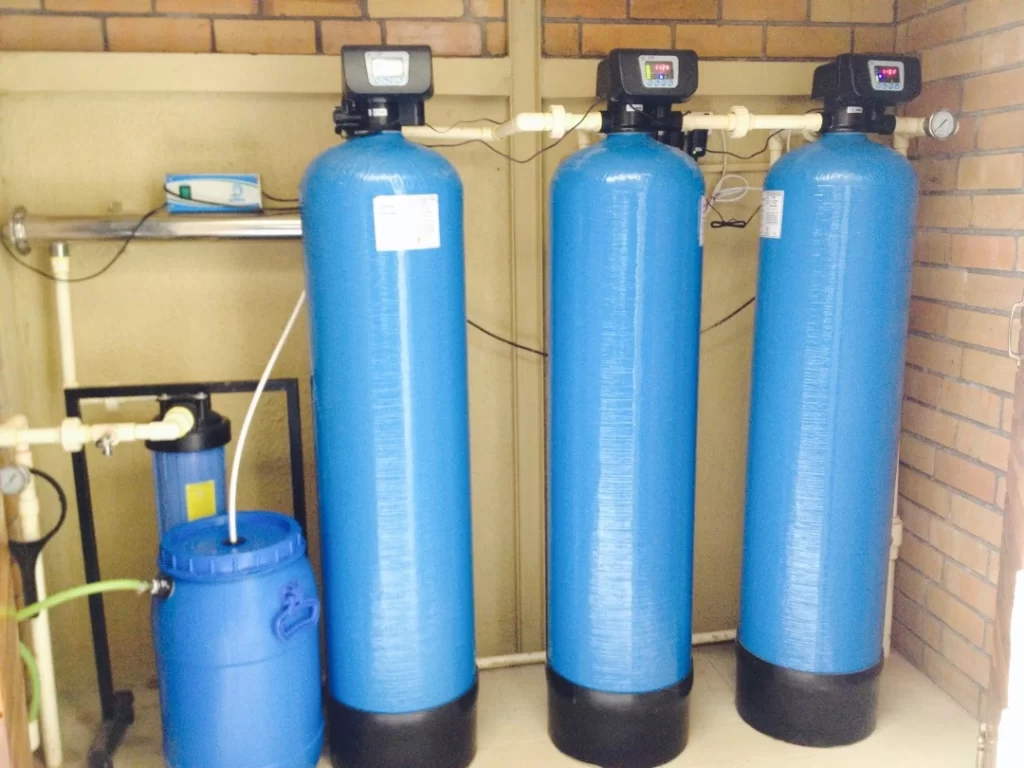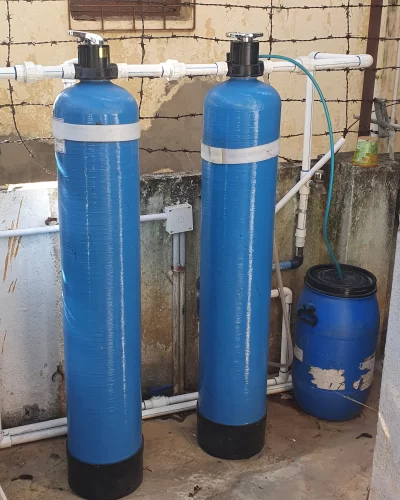Borewell Water Treatment
How to purify bore well water for Household needs such as Bathing, Washing Clothes, etc. including drinking?
If you are totally dependent on borewell or well water for your household needs, including drinking water, then it is imperative that you have your borewell water or well water sample tested in a water testing laboratory.
Most of the time there will be no contaminated well water symptoms to tell if well water is bad. There could be many health problems from drinking well water which is bad. If the health issues with well water are due to the presence of heavy metals like Arsenic, then it is the most dangerous. Water Sparks Borewell Water Filter can remove all the impurities from the water and give clean and healthy water to drink.
How to Make Borewell Water Safe.
Depending on the water test results of the well or borewell water, these are the steps on how to clean well water for general utility purposes including drinking.
Borewell Water with no Problems
If you are lucky with your borewell water and the well water test results prove that the well water is safe and does not have any contaminants above the maximum contaminant level, then all you need to do is to have a simple cartridge filter like the ones explained and also to remove any odors and to improve the taste of water. Also, install an activated carbon filter.
How to Remove Arsenic from Borewell Water or Well Water
If the test results show that there is Arsenic or other heavy metal poisonings in the well or borewell water, then the best way to purify well water will be to use a Reverse Osmosis or RO purifier unit. There are other methods to remove Arsenic from well water but RO is the most practical and reliable way to get rid of arsenic from water.

Borewell Water Treatment Plant in Chennai
Get the best offer for Borewell Water Treatment Plant in Chennai from Water Sparks. Water sparks is the leading manufacturer and supplier of borewell water treatment products in Chennai, Tamil Nādu. We have more than 25+ years of experience in the water treatment industry. Our team of experts manufactures high-quality borewell water treatment plants in Chennai. Our team of highly qualified water treatment technicians manufactures and offers a long-lasting and superior-quality borewell water treatment plant in Chennai. Our plant uses the latest technology of membranes and filtration systems. To know more about Borewell Water Treatment Plant in Chennai contact us @ +91 9884366644.
Borewell Water Filter
Arsenic in Borewell or Well Water
Since Arsenic salts in well water has no smell or taste, you will not know about the presence of Arsenic in water unless the water is tested. So, testing for Arsenic is imperative when using well water for drinking. Drinking water with Arsenic can cause severe damage to health. Arsenic poisoning is cumulative. Arsenic that gets into your body is not removed, but stays in the body and accumulates. As you continue to drink the Arsenic water, you are being slowly poisoned and with time it will cause severe health problems and early death. Arsenic and other heavy metals in well water is one of the most dangerous aspects of drinking well water. So, you should have a fail-safe water purifier system for Arsenic by installing a Point of Use – POE RO water purifier in the kitchen where water for drinking and cooking is taken. The POE RO should be in addition to the whole house well water purification system against Arsenic in the borewell water. Arsenic can be removed by oxidation with chlorine (Sodium Hypochlorite) or potassium permanganate or coagulation with ferric chloride and then filtering. Activated alumina and ion exchange resins are also effective. The best option to purify Arsenic well water is by installing an RO plant for the whole house water supply.
Whole House Borewell Water Filter
A whole house borewell or well water purification system with an RO plant is the best solution for all well water problems like Arsenic, Bacteria, iron, bad smell, heavy metals, etc. A Reverse Osmosis Purifier Plant or a Nanofiltration plant will get rid of all known impurities of well water. To calculate the capacity of the whole house water purification system for well water with a Reverse Osmosis water purifier plant, it should be assumed that the average daily need of water per person is 200 liters. So for example, a family of 6 will need 6×200=1200 liters of purified water per day from the RO water purifier plant. RO purifier plants are usually classified as having a flow of so many Liters per Day or LPD of purified water. Since the reject water of an RO plant is clean highly filtered water with a higher TDS, it can be used to flush toilets, cleaning floors, watering plants and so on. The product RO purified water should be used only for drinking, cooking, bathing, etc. So you should have separate tanks for RO purified water and RO reject water. The house piping should be so arranged that all the water going to the toilet flushes should come from the overhead tank for RO reject water. One separate tap should be there in each bathroom and outside the kitchen connected to the RO reject water tank. Water from this pipe will be used for washing floors and such work where you will not require purified low TDS RO product water. The reject water of an RO purifier has already undergone fine filtration and has been disinfected to protect the RO membranes and this was done before the whole raw water to the RO was pumped under high pressure to the RO membrane. From this purified raw water pure water goes through the membranes into the purified water tank and the reject water flows out the reject water tank. The reject water from the RO water purifier will have higher salt content due to rejection by the RO membrane. If it is assumed that 20% of the pure water required by a household is used in flushing toilets and washing floors, then you could get away with a smaller whole house RO plant. In our example above a 1000 liters per day RO purifier plant would do the job. For cleaning, initially you could use the RO reject water and final rinses with the RO permeate pure water. This is because the reject water of the RO contains a lot of salts, and when the water dries, these salts would leave a scale, a whitish colored stain marks on the cleaned surface. You avoid this by a final flush with the pure permeate water.
A whole house borewell or well water purification system with an RO plant is the best solution for all well water problems like Arsenic, Bacteria, iron, bad smell, heavy metals, etc. A Reverse Osmosis Purifier Plant or a Nanofiltration plant will get rid of all known impurities of well water. To calculate the capacity of the whole house water purification system for well water with a Reverse Osmosis water purifier plant, it should be assumed that the average daily need of water per person is 200 liters. So for example, a family of 6 will need 6×200=1200 liters of purified water per day from the RO water purifier plant. RO purifier plants are usually classified as having a flow of so many Liters per Day or LPD of purified water. Since the reject water of an RO plant is clean highly filtered water with a higher TDS, it can be used to flush toilets, cleaning floors, watering plants and so on. The product RO purified water should be used only for drinking, cooking, bathing, etc. So you should have separate tanks for RO purified water and RO reject water. The house piping should be so arranged that all the water going to the toilet flushes should come from the overhead tank for RO reject water. One separate tap should be there in each bathroom and outside the kitchen connected to the RO reject water tank. Water from this pipe will be used for washing floors and such work where you will not require purified low TDS RO product water. The reject water of an RO purifier has already undergone fine filtration and has been disinfected to protect the RO membranes and this was done before the whole raw water to the RO was pumped under high pressure to the RO membrane. From this purified raw water pure water goes through the membranes into the purified water tank and the reject water flows out the reject water tank. The reject water from the RO water purifier will have higher salt content due to rejection by the RO membrane. If it is assumed that 20% of the pure water required by a household is used in flushing toilets and washing floors, then you could get away with a smaller whole house RO plant. In our example above a 1000 liters per day RO purifier plant would do the job. For cleaning, initially you could use the RO reject water and final rinses with the RO permeate pure water. This is because the reject water of the RO contains a lot of salts, and when the water dries, these salts would leave a scale, a whitish colored stain marks on the cleaned surface. You avoid this by a final flush with the pure permeate water.
Water Sparks Borewell Water Treatment Plant provides fully cleaning operations, and it can continuously separate impurities from water and other liquids. The maintenance and operation of the filter are very simple, even in severe operating conditions it also can continue to keep running in good condition.

Usages
This high-quality, granular media is produced from a unique mineral deposit that has high surface area and porosity, making this media preferred over conventional sand. The surface of this media features microscopic minerals that allow particulate matter to penetrate deeply into the bed.
Chlorine and slight sulfur odors can often be removed by a carbon filter unit. However, when odors are extreme, your water treatment professional may recommend a chemical feed system to help increase the life of a carbon unit. In such installations, this series of filters will effectively remove the taste and odor associated with chlorine and sulfur.
Ideal for treating acidic waters that can corrode a plumbing system.
